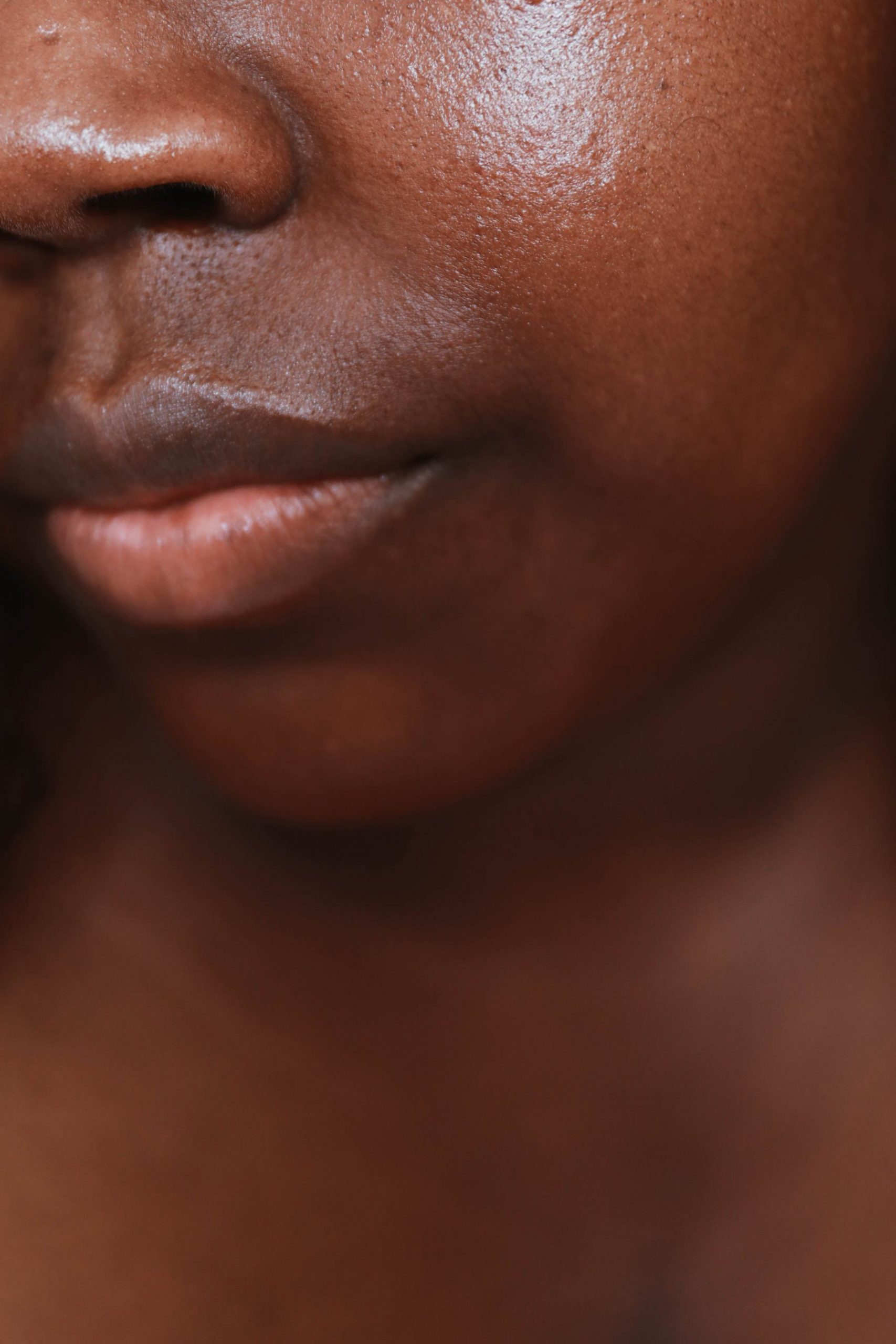
Although I’ve always been generally happy with the condition of my skin (thanks Mum and Dad!), one of my main skin concerns has always been that of hyperpigmentation. The main areas of my face affected were the areas behind my cheekbones and around my mouth. Since the age of 15, I’ve been trying every damn trick in the book to get rid of them, even the methods that posed health and safety risks. Zoinks.
After my unfortunate period of skin bleaching (a whole other story in itself), I tried using fresh lemon juice, Tumeric, baking powder, oats and all the serums and creams suggested to me by Youtube beauty gurus to try and get rid of the stubborn marks, and funnily enough, I noticed that the natural remedies were the ones that were failing me, time and time again. (Editor’s note: Never, and I mean NEVER use lemon juice on your skin!).
After years and years of trying out different products, I finally found the ingredients that my skin vibed with, and after slowly incorporating them into my skincare regimen, I began noticing a stark-yet-gradual change in the appearance of the hyperpigmentation on my face, with the dark areas near my cheekbones almost disappearing entirely, and so in today’s post, I thought I’d share some of my favourite products that have helped!
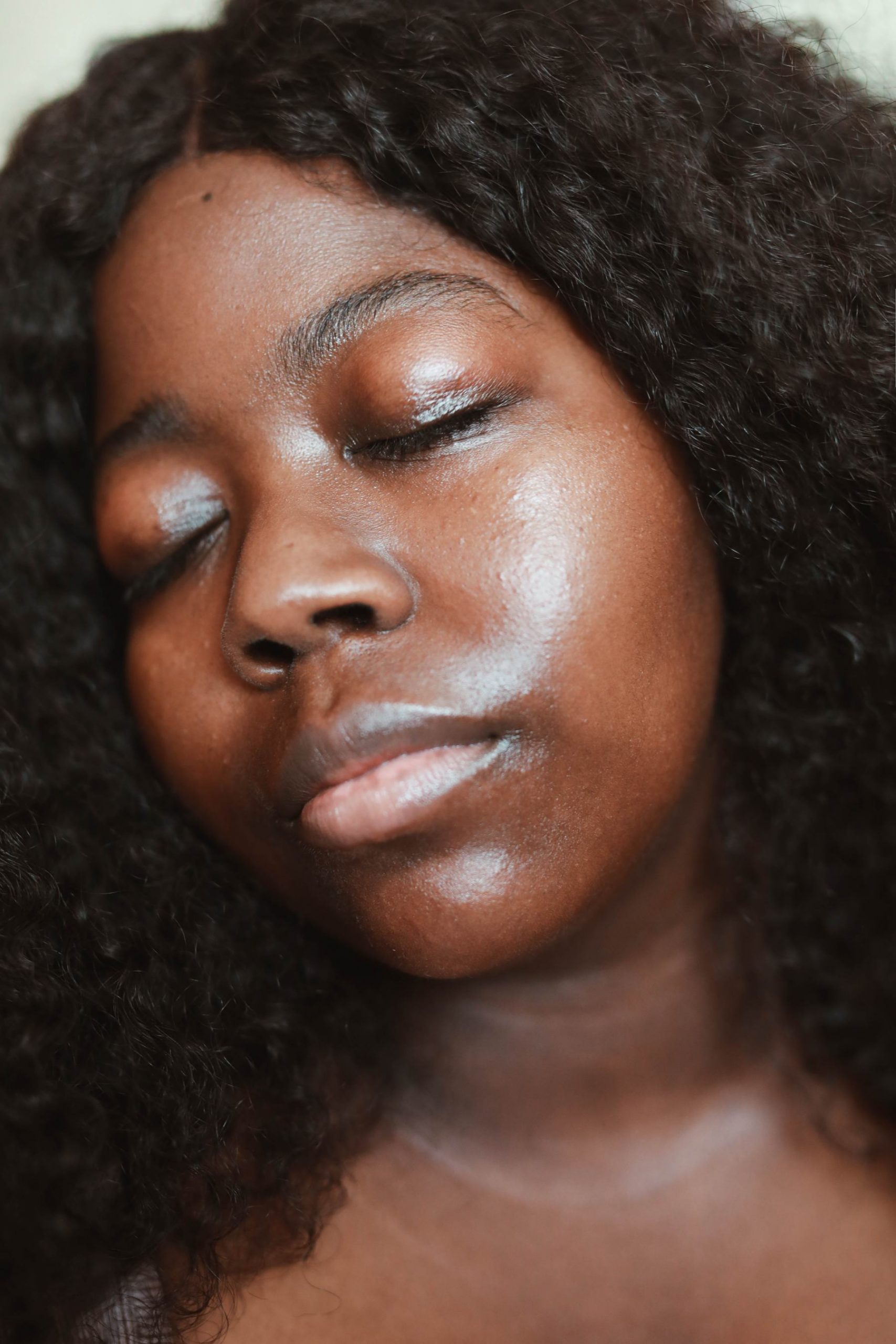
Freshly washed and exfoliated skin – hence the texture flare-up!
Before I begin, I’d like to quickly note that I am not an official skincare expert and that my recommendations and knowledge comes from years and years of trying many products and doing a lot of research! The way that our skin reacts to products is so subjective – what works for me may not work for you, so it’s all about trying out new things!
What *is* Hyperpigmentation?
Hyperpigmentation is basically an all-encompassing term for darkened spots and patches on the skin caused by an increase in melanin. The increase in melanin can be triggered by sun exposure, pregnancy, hormones, scarring and spots. When we get spots of cuts/scratches to the skin, it becomes exposed to UV rays that trigger the cells into overproducing melanin, causing discolouration. Hyperpigmentation can be dark brown, black, red or even purple, and the darker in skin tone you are, the more prone you are to developing it.
IF YOU ARE GOING TO USE PRODUCTS TO TREAT HYPERPIGMENTATION, YOU ABSOLUTELY MUST MUST MUST USE SUNSCREEN ON TOP.
- UV rays are the MAIN culprits of hyperpigmentation. The sun triggers melanin production in the skin, so if you do not use sun protection, then all the work you are doing into getting rid of them will be in vain. In most cases, it’ll probably even make the problem worse. SO BUY AND START USING A SUNSCREEN BEFORE EVEN THINKING ABOUT HYPERPIGMENTATION TREATMENT.
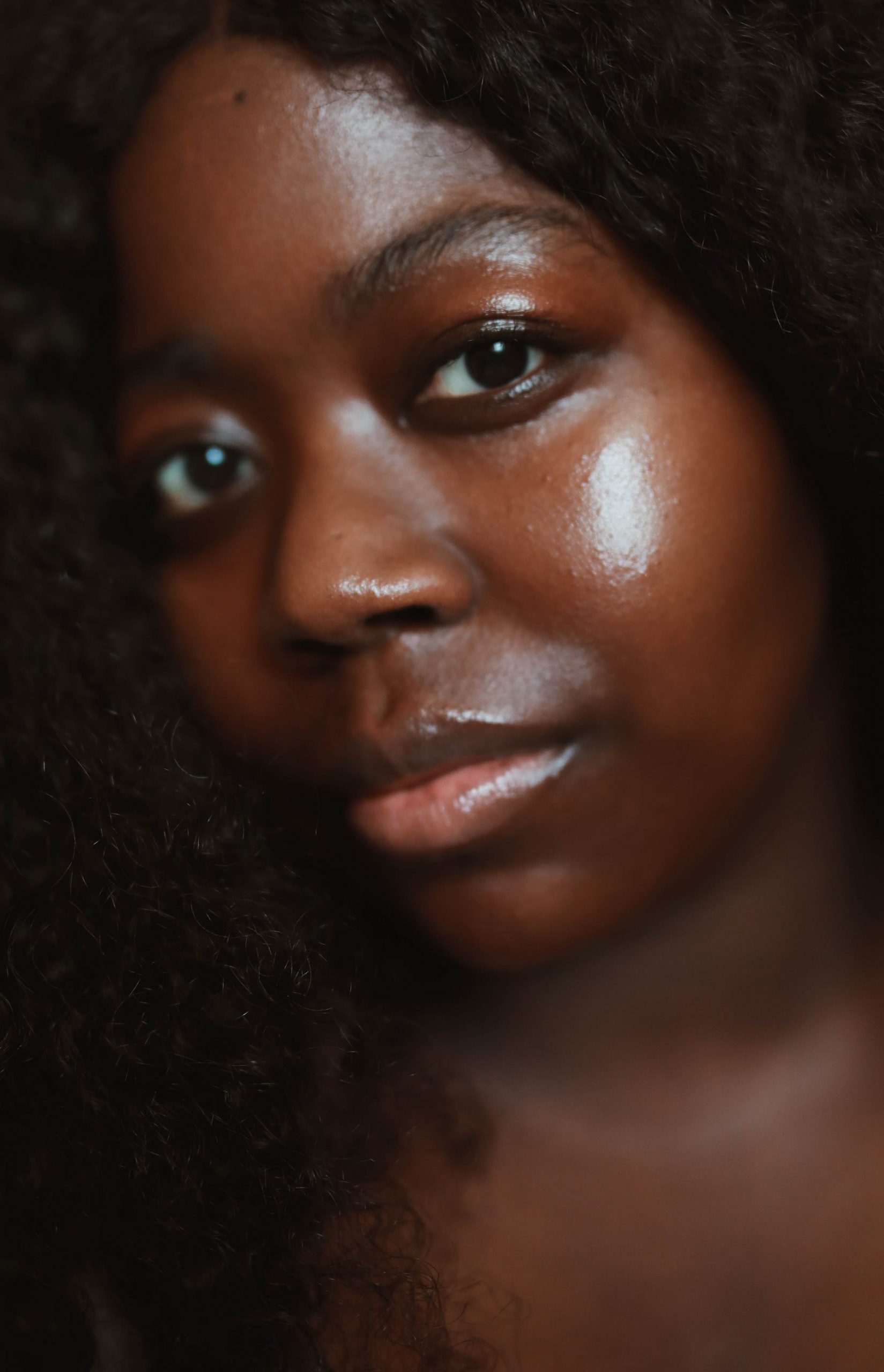
Which ingredients help treat it?
Herein lies the sometimes-confusion. There are so many products, chemicals and ingredients that can help hyperpigmentation, that it can sometimes be a bit overwhelming to know which products to try or layer first. The confusion only deepens once you look for suggestions on the best products, and are either inundated with many bits of conflicting advice from several skincare experts at once or faced with endless articles touting a plethora of ingredients as the ‘magic’ ingredient.
The journey to finding the perfect cocktail of ingredients will definitely involve you having to turn into a guinea pig for a while to find out what works for you, but before I share the ingredients to keep in mind, let me quickly tell you the ingredients to stay away from:
Hydroquinone. This is one of the main ingredients often found in bleaching creams. I don’t care if you’re prescribed it by a skin doctor. Personally, I would stay away from it. During my very insecure-I-wish-I-were-lighter teenage days, I would go through bottles of this and trust me, not only are the results weird and super suspect, but it can also have a potentially damaging effect on your health.
Hydroquinone causes something called ‘The Halo Effect’, where it leaves a white ring around the area you’re treating. It can also give skin a grey appearance (happened to me!) which just looks…unhealthy.
I would also avoid using products that have high amounts of TCA (trichloroacetic acid), something normally found in chemical peels, as it can cause scarring and can make the pigmentation worse.
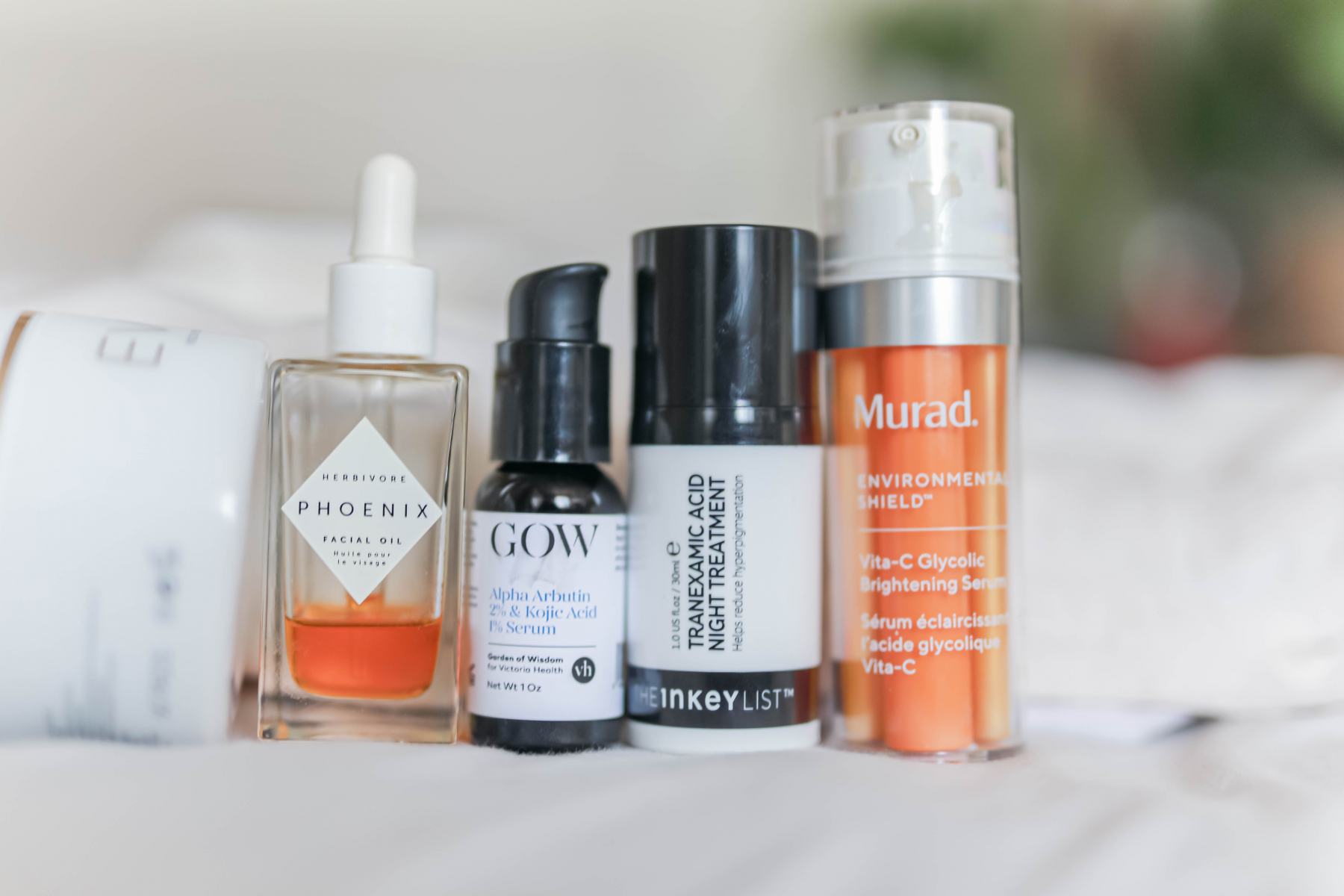
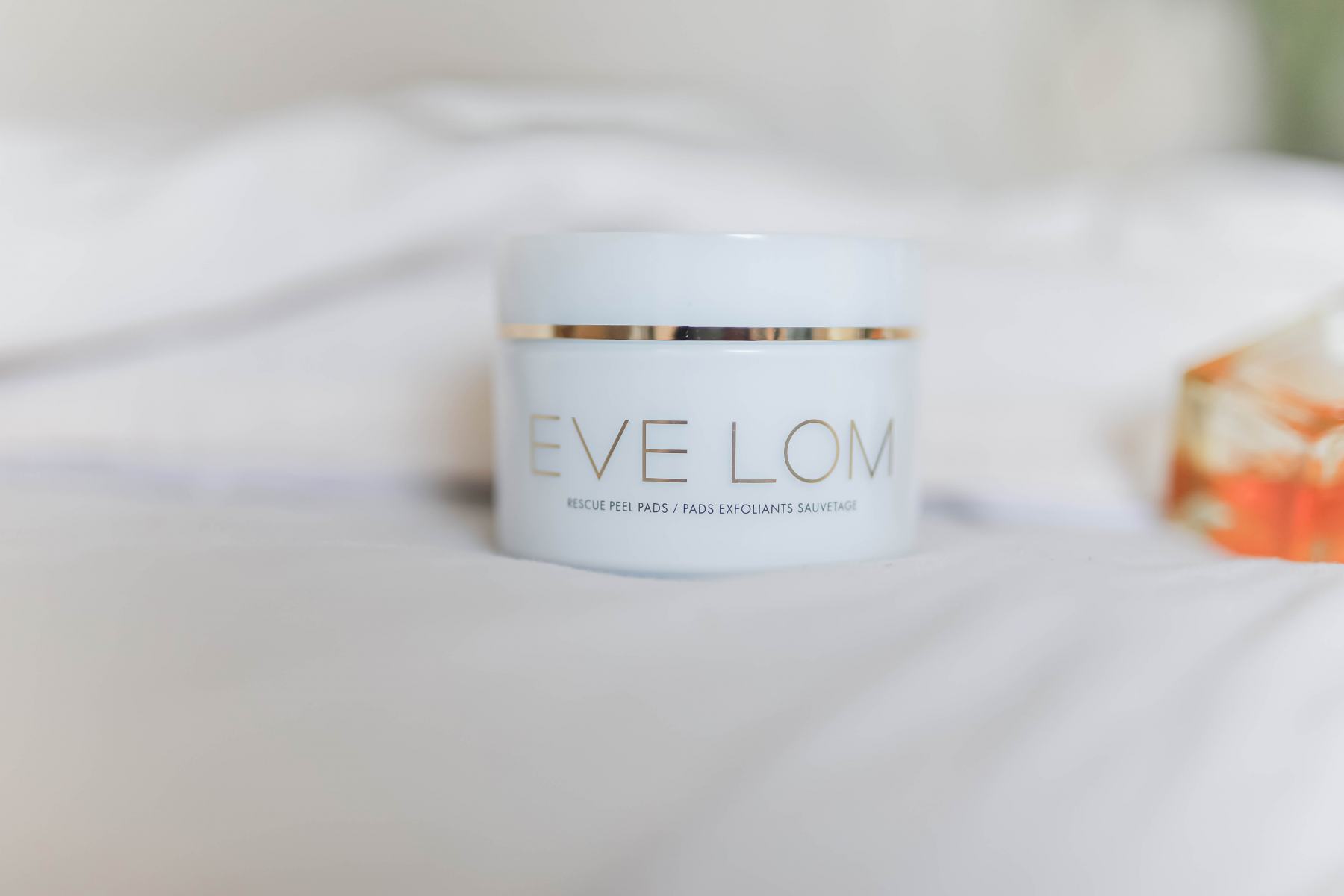
Whew…now that we have the nasties out of the way, let’s talk about the good ingredients to look out for! Please bear in mind that there are quite a few on the market; I’m just noting some of the popular ones I’ve tried below:
- Vitamin C. Vitamin C is a powerful antioxidant known for keeping both the inside and outside of our bodies healthy. It’s also known as ascorbic acid. It can help reduce the appearance of scarring, and can even out the skin tone by boosting collagen production. It’s considered safe for all skin tones.
- Azelaic Acid. This acid is great as it contains anti-inflammatory benefits for the skin. This acid is more beneficial for those who have acne and acne-related hyperpigmentation, however, there is a risk of developing MORE hyperpigmentation if you’re darker-skinned. I used this acid for 3 weeks and found that the area around my mouth was getting darker – I threw it away so fast! So ultimately, it depends on skin tone!
- Mandelic Acid. Mandelic Acid is a form of AHA that is made from almonds. It’s a great ingredient to layer, especially if you’re concentrating on anti-ageing products to treat wrinkles. You can also use it for inflammatory acne too.
- Kojic Acid. My new fave. A favourite of the online beauty community, Kojic acid is a form of fungus that is considered a natural bleaching agent. It’s always predominantly been used to treat age spots (which are brown), which is why it’s a fave among darker skin tones, as it has a tendency to target brown pigment specifically.
- Niacinamide. This is a type of Vitamin B3, which is involved in cell metabolism. Applying it topically can interrupt the process of cell pigmentation, which in turn helps brighten the skin. Although weaker than the other acids, it’s a great acid to layer with other acids, and can be used to treat acne.
- Alpha Arbutin. I’m such a huge fan of Alpha Arbutin – it’s been such a gamechanger for me! It’s considered to be a natural form of hydroquinone and may be just as effective, with none of the nasties that the latter has. Arbutin comes from dried blueberries and pear leaves. Combined with Kojic acid, you can expect to see changes in the skin after around 2 months. I absolutely love it.
- Retinoids. Retinoids/Retinols are compounds made from Vitamin A and is often seen as a go-to product for hyperpigmentation. I’ve only just started using it (on a low dose) so I’m still seeing what it does, but they help treat pigmentation by burrowing deep within the skin to even out texture and skin tone. They also exfoliate older, darker patches of hyperpigmentation too, so all and all, it’s considered a great ingredient to use! Just remember that you have to build your skin’s tolerance up to it as it’s strong, so perhaps start off with a 0.1% concentration.
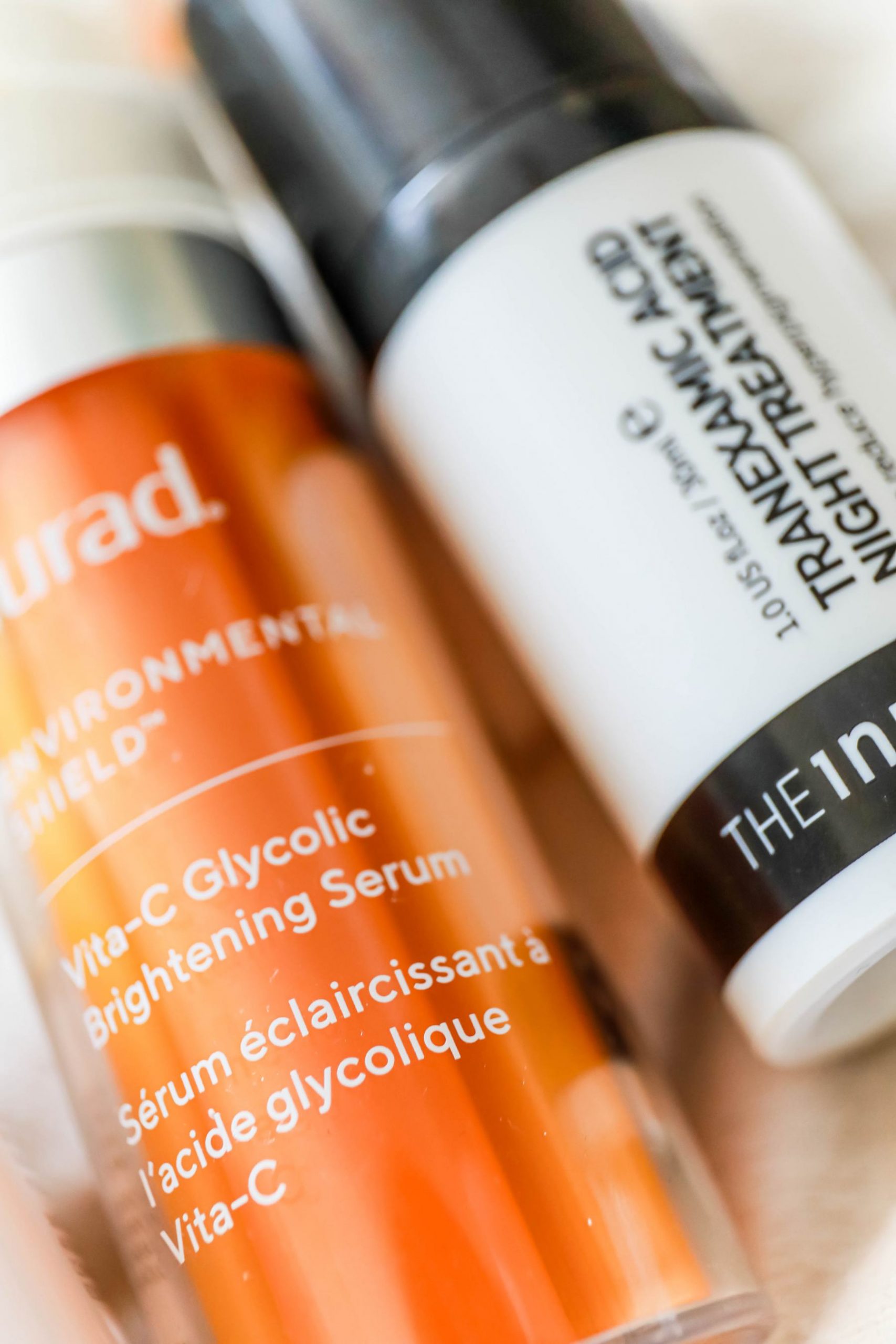
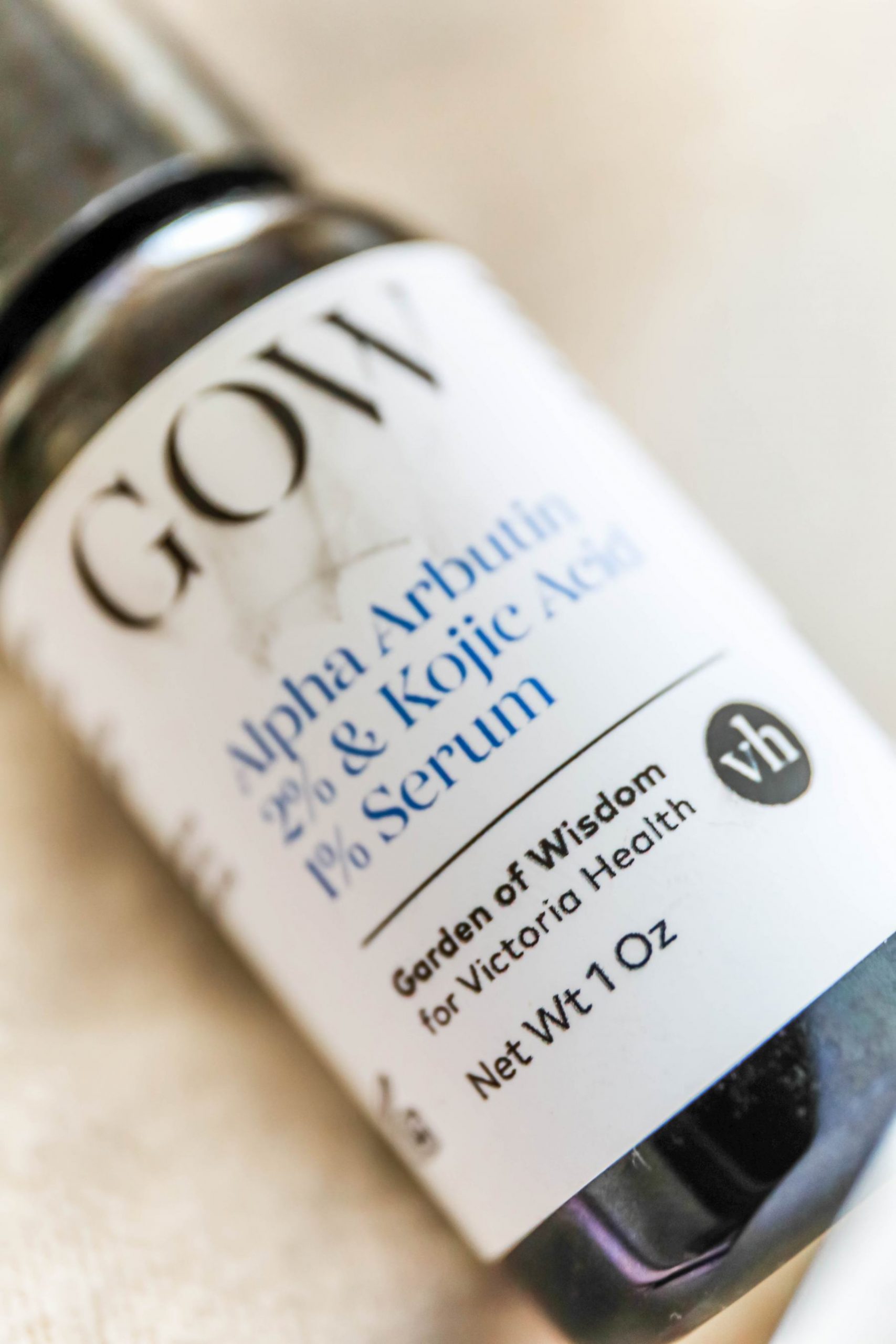
Products I’m Currently Using (click the product name!):
Garden of Wisdom Alpha Arbutin 2% and Kojic Acid 1% Serum | £12
Not only does this serum contain two of my fave ingredients, but it also contains niacinamide. It’s almost like a holy grail of brightening. I’ve been using this serum for a month and I’ve seen changes already to the brightness of my skin. My skin has a certain….shine and plumpness to it these days that I love, and the pigmentation around my mouth is beginning to lighten!
Murad Environmental Shield Vita-C Glycolic Brightening Serum | £72
Containing Glycolic acid, this serum is exfoliating one that’s been combined with vitamin C to help resurface and scrub the skin of free radicals and dead, dull surface cells. I LOVE how my skin feels when using this – it feels as if I’ve had a relaxing chemical peel. The price is PAINFUL I know, but is it worth it? I believe so!
The Inkey List Transexamic Acid Overnight Treatment | £14.99
This treatment is great for those random stubborn spots or acne breakouts. It’s a high-performance night mask that works wonders and helps to even out skin tone. I tend to use this once a week!
Herbivore Phoenix Regenerating Facial Oil | £15 for small version
I don’t often use facial oils and when I do, I use them at night or in the late afternoon to help lock in the hydration from the moisturiser in the previous step. Herbivore includes Rosehip oil, hyaluronic acid AND retinol, and it provides a lovely hydrating glow that makes the skin POP.
Eve Lom Rescue Peel Pads | £60
The Eve Lom pads contain a blend of AHAs, BHAs, and PHAs and exfoliates the skin without being abrasive. I absolutely love these pads. IT SCRAPES EVERY BIT OF DIRT AND DEAD SKIN OFF YOUR FACE and it’ll have you looking at the pad like ‘wtf?!’. I love how gentle it is too – it feels like you’re running a water soaked-cotton wool pad across your face. I love it!
(Disclaimer, I was gifted the Eve Lom pads and the Murad serum under no obligation to post. I’ve been using the products for a couple months and wanted to give my honest thoughts!)
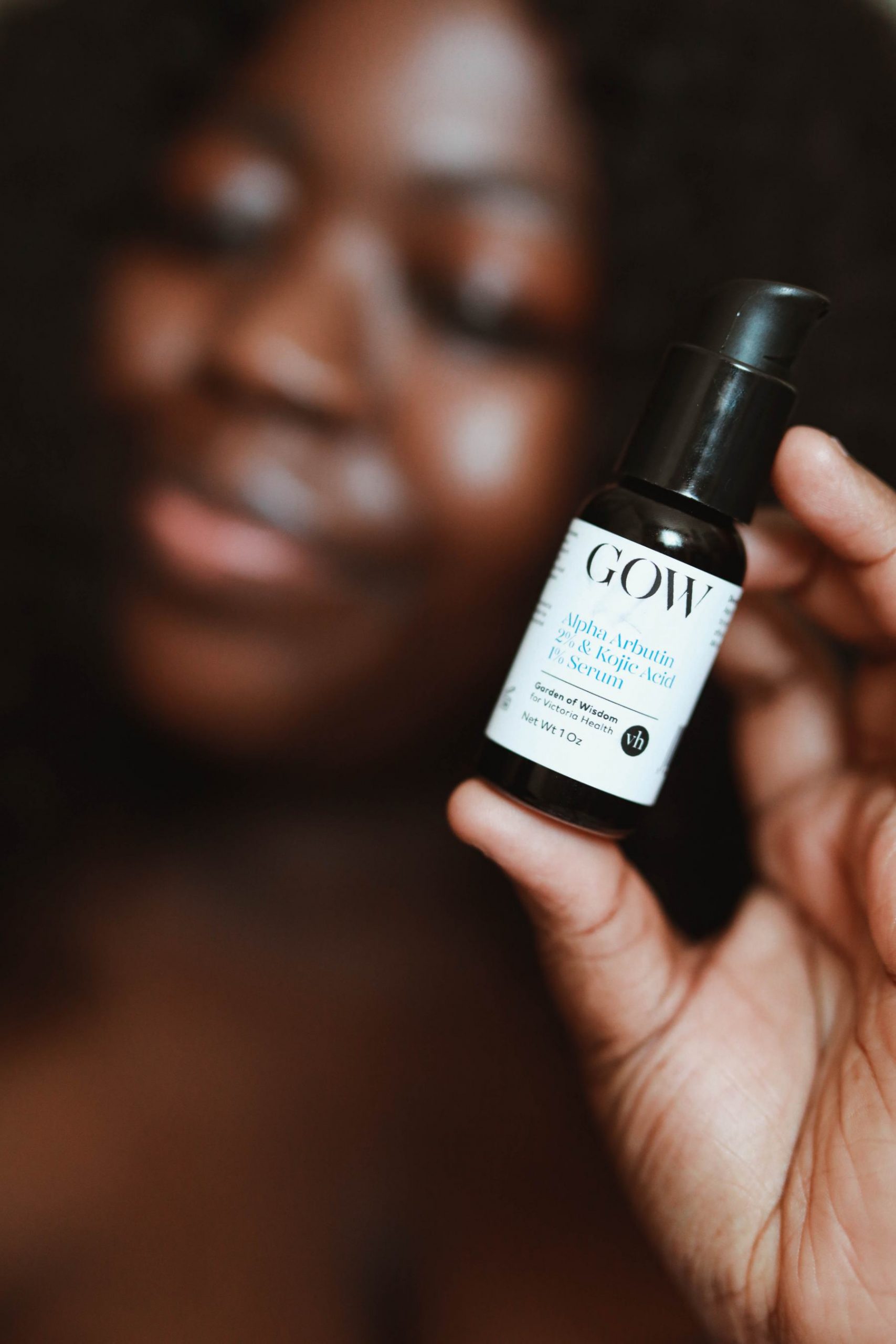
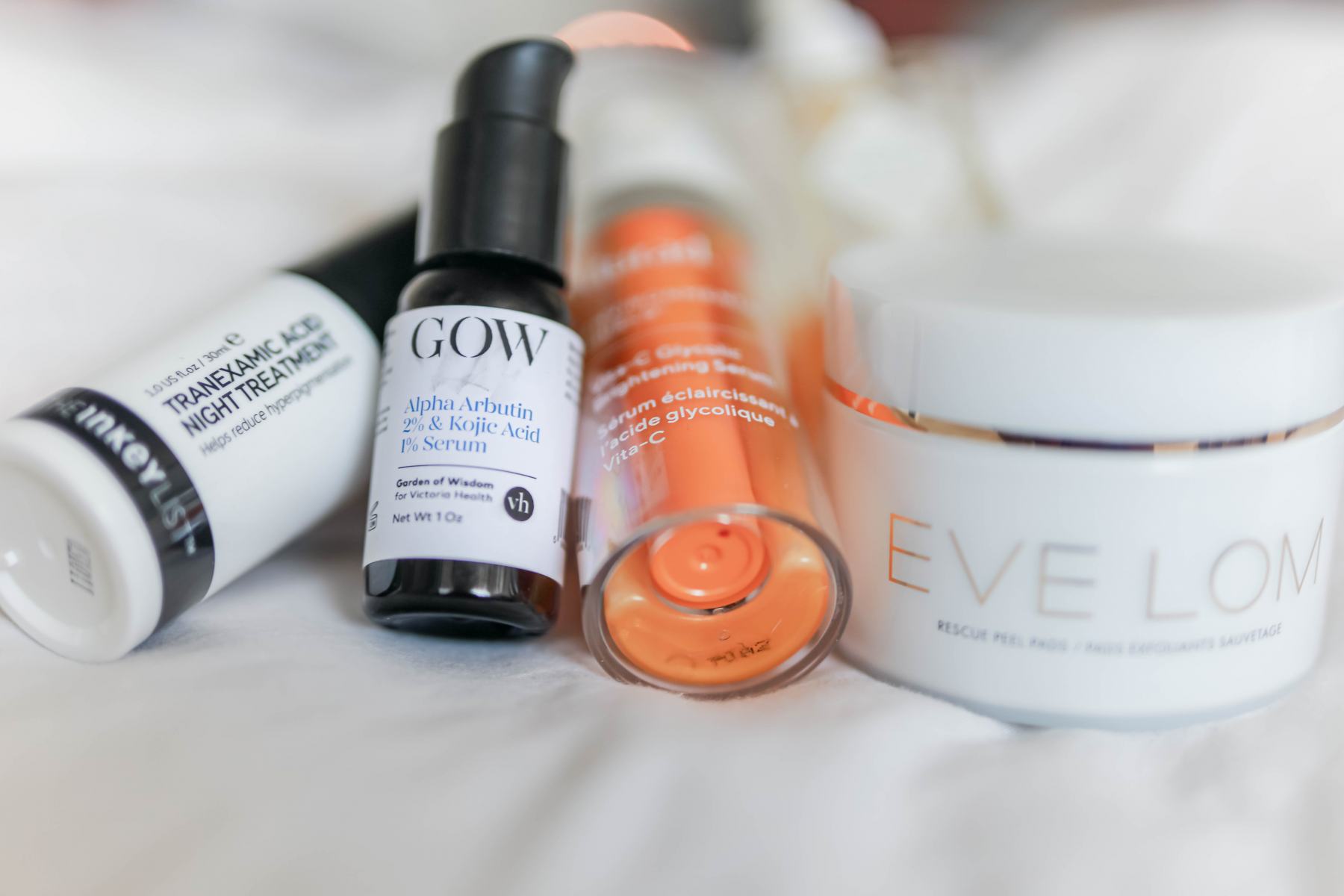
April 9, 2021
Steph
Products I Use for Hyperpigmentation!

